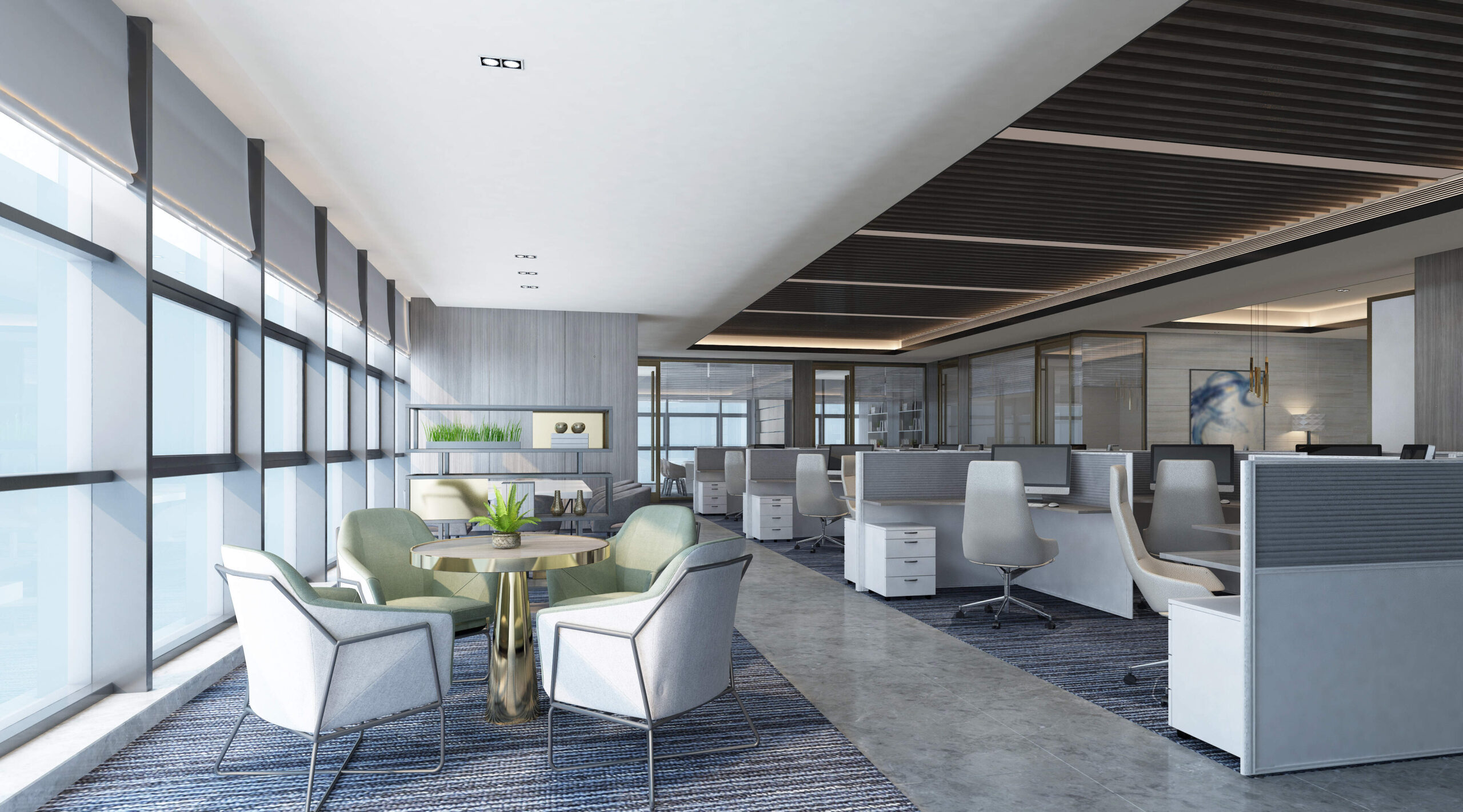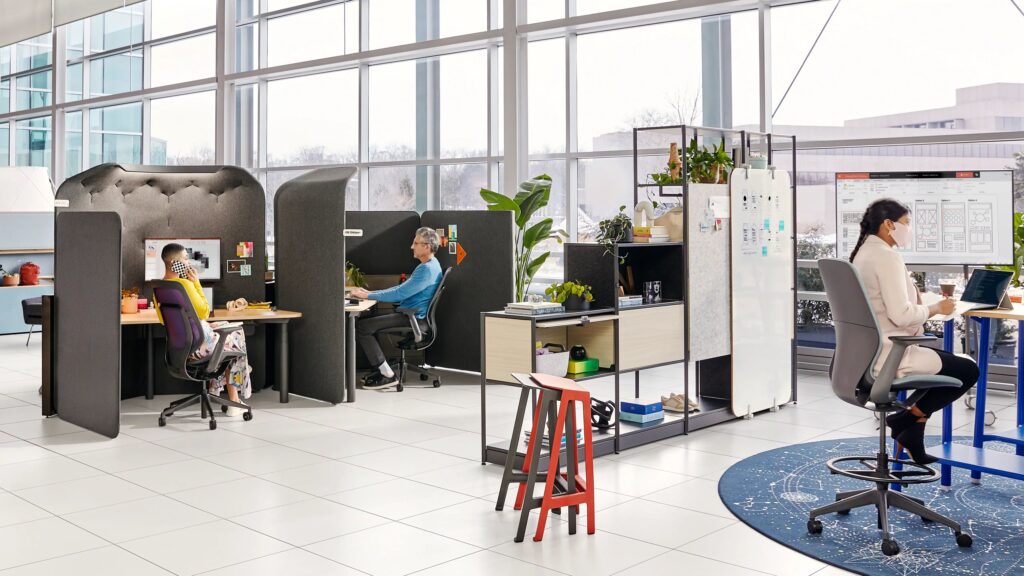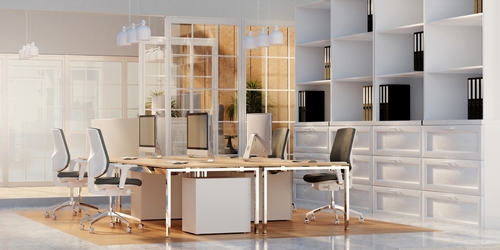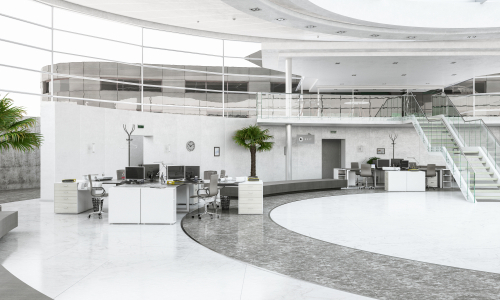Design Services
The Office Shop prides itself on our
outstanding customer service and support.
Complete for a FREE consultation with a furniture design specialist!
[Blogs]
Hybrid Office Furniture Guide: How to Create Flexible, Ergonomic Workspaces for the Future
Oct 10 2025

The modern workplace is evolving faster than ever. Since 2020, hybrid work, where employees split time between home and office, has become the dominant model for many businesses. According to a 2024 Gallup report, over 52% of remote-capable employees work in hybrid settings. This shift is transforming not only how we work but also how we design our offices. Static cubicles and one-size-fits-all layouts no longer meet the needs of today’s workforce. Instead, companies are investing in hybrid office furniture, solutions that prioritize flexibility, collaboration, and ergonomics.
Why Hybrid Work Demands a New Furniture Strategy
The traditional office was built for predictability: assigned desks, fixed meeting rooms, and permanent layouts. Hybrid work changes that. Employees now come in on different days, teams collaborate dynamically, and spaces must adapt quickly to shifting needs. This means office furniture must be modular, mobile, and multi-functional.
Moreover, employees expect more from their workspaces. Hybrid office furniture is central to meeting these expectations because it shapes how space is used and how people feel in it.
Core Principles of Hybrid Office Furniture Planning
Designing a hybrid-ready office is not just about buying new desks. It is about rethinking how furniture supports work modes, employee well-being, and long-term scalability. Here are the key principles:
1. Flexibility and Modularity
Flexibility is the cornerstone of hybrid office design. Instead of fixed layouts, choose furniture that can be easily rearranged for different uses.
- Mobile workstations: Desks on casters that roll into new configurations in minutes.
- Modular seating: Lounge furniture that clicks together to create collaborative zones or quiet spaces.
- Reconfigurable tables: Foldable or height-adjustable tables for meetings, workshops, or hot-desking.
Companies like Global Furniture Group and Groupe Lacasse offer modular systems specifically designed for hybrid office furniture setups.
2. Ergonomics and Wellness
With employees alternating between home and office, it is vital that in-office furniture promotes health, posture, and productivity. Poor ergonomics contribute to musculoskeletal disorders, costing employers billions annually.
Key ergonomic solutions include:
- Sit-stand desks: Encourage movement and reduce sedentary time.
- Adjustable chairs: Support spinal alignment and reduce strain.
- Monitor arms and accessories: Improve screen positioning and comfort.
Ergonomic design also influences retention and morale. Comfortable employees are more productive and less likely to experience burnout, making ergonomically designed hybrid office furniture a smart long-term investment.
3. Multi-Use and Space-Saving Solutions
Hybrid offices often operate with fewer people on-site, but that does not mean space should sit unused. Choose furniture that performs multiple roles:
- Convertible tables that transition from meeting space to hot-desking zones.
- Acoustic pods that double as private meeting rooms and focus booths.
- Storage-integrated benches to maximize footprint efficiency.
These solutions improve space utilization and allow you to do more with less square footage.

Furniture Strategies for Hybrid Collaboration
Hybrid work thrives on collaboration, but it also requires spaces for deep focus. Your furniture plan should balance both.
- Team hubs: Use modular tables and soft seating to create informal, collaborative areas.
- Focus pods: Acoustic booths or screen dividers help individuals concentrate without distractions.
- Dynamic meeting rooms: Adjustable tables and mobile whiteboards allow teams to reconfigure the space on demand.
This flexibility also supports equity in hybrid meetings, making it easier for remote participants to engage when in-office spaces are designed for seamless digital collaboration. The right hybrid office furniture can make this balance possible.
Sustainable and Future-Proof Choices
Sustainability is now a top priority for businesses and employees alike. Hybrid office furniture can help you reduce your carbon footprint in several ways:
- Refurbished and reused furniture: Extend the life of existing assets.
- Recyclable materials: Choose furniture made from FSC-certified wood, recycled steel, or low-VOC finishes.
- Modular design: Avoid costly and wasteful replacements by adapting furniture over time.
Partnering with suppliers who prioritize sustainability ensures your office evolves responsibly.
How to Transition to a Hybrid-Ready Workspace
Redesigning your office does not have to happen overnight. Here is how to make the transition effectively:
- Audit your current space: Identify underused areas and outdated furniture.
- Engage employees: Gather feedback on what types of spaces they need most.
- Start with pilot zones: Test modular setups in one part of the office before a full rollout.
- Work with experts: Space planners and furniture specialists, like The Office Shop, can help design layouts tailored to your needs.
- Plan for scalability: Choose hybrid office furniture systems that can grow or shrink as your workforce changes.
The Future of Office Furniture Is Flexible
Hybrid work is not a passing trend. It is the new normal. Businesses that adapt their workspaces to support flexibility, collaboration, and well-being will have a clear competitive edge. Hybrid office furniture is central to that transformation. It allows your space to evolve with your workforce and ensures employees have the tools they need to do their best work, wherever they are.
At The Office Shop, we specialize in helping Canadian businesses design future-ready offices with modular, ergonomic, and sustainable furniture solutions. Whether you are reconfiguring an existing space or planning a new one, our team can guide you every step of the way.
Contact us today to start planning your hybrid office transformation.
Get A Free Office Furniture Consultation

Let's Talk with Our Experts
1-877-305-9955  or
or

Complete for a FREE consultation with a furniture design specialist!
Category
Recent Posts

3 Essential Office Furniture Toronto Strategies for Success
Design Services, Brochures & Guides
Dec 5 2025 

Office Furniture Mississauga: 8 Design Tips for a Productive Workspace
Design Services, Brochures & Guides
Nov 28 2025 

Workspace Redesign Brampton Guide for a More Productive Office
Design Services, Brochures & Guides
Nov 21 2025 

How a Professional Office Furniture Consultation Transforms Your Workspace for Better Results
Design Services, Brochures & Guides
Nov 10 2025 
[Find A Consultant]
We service all across Canada
[FREE consultation]
Complete for a FREE consultation
with a furniture design specialist!
Services
Products
Locations Serviced
Contact Us
 Call Us
Call Us
905-305-9955
 Location
Location
366 Denison St, Markham, ON L3R 1B9, Canada















